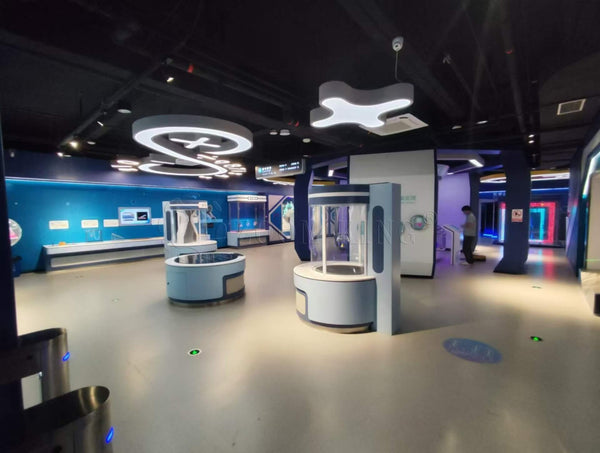Inspiring Exhibits for a Unique Experience: Where Science and Interactive Design Ignite Young Minds

Introduction
Inspiring exhibits that combine science and interactive design create a unique experience for young learners, transforming traditional education into an exciting journey of discovery. These exhibits are thoughtfully designed to captivate children’s imaginations while fostering a deeper understanding of scientific concepts. The perfect blend of aesthetics and interactivity not only aligns with educational goals but also offers an engaging way for children to learn through play.
The Power of Interactive Design in Inspiring Exhibits
Interactive design is at the heart of what makes these exhibits so memorable. Here’s why the combination of science and design leads to such a unique and impactful experience:
-
Hands-On Learning: Children can engage directly with the exhibits, manipulating objects, pressing buttons, and experimenting with scientific principles. This hands-on interaction encourages active participation and exploration.
-
Visually Striking Design: The exhibits feature elegant, visually appealing designs that attract attention and invite curiosity. Whether it’s the glow of LED lights or dynamic shapes, the aesthetics help children focus on the educational content.
-
Innovative Technology: Many exhibits incorporate cutting-edge technology, such as augmented reality, touchscreens, or sensors. These elements not only make learning fun but also provide children with modern, tech-driven educational experiences.
These exhibits offer an inspiring way for children to connect with science while having fun, leaving a lasting impression that extends beyond the classroom.
Why Children Love These Inspiring Exhibits
Interactive science exhibits are loved by children for their ability to turn learning into a unique adventure. Here are the reasons they resonate so deeply with young learners:
-
Fun and Engagement: Children are drawn to the dynamic, interactive nature of the exhibits. Instead of passively absorbing information, they become active participants in their learning journey.
-
Exploration and Discovery: The exhibits encourage children to explore different outcomes by interacting with the materials, allowing them to experiment and discover how science works in real time.
-
Creative Thinking: These exhibits stimulate creativity and critical thinking by presenting challenges that require children to solve problems and think outside the box.
Unique Experiences That Enhance Education
These inspiring exhibits aren’t just about fun—they’re designed to significantly enhance educational outcomes by providing children with unique learning experiences. Here’s how:
-
Improved Learning Retention: Studies show that children retain information better when they are actively involved in the learning process. Interactive exhibits help children remember scientific concepts through immersive, hands-on experiences.
-
Multisensory Learning: Engaging multiple senses makes the learning process more comprehensive and memorable. Whether through touch, sight, or sound, these exhibits create a fully immersive environment that enhances understanding.
-
Real-World Applications: The unique experiences provided by these exhibits allow children to connect scientific principles with real-world applications, making abstract concepts more tangible and understandable.
Notable Examples of Inspiring Exhibits
Some exhibits stand out for their ability to deliver a truly unique and inspiring experience. Here are a few exceptional examples that seamlessly combine science with interactive design:
-
Tornado Formation Exhibit: By pressing a start button, children can watch as a tornado takes shape inside a transparent cylinder. This visually striking exhibit explains the science behind weather phenomena while keeping kids captivated by its dynamic movement.
-
Solar Power Experiment: In this exhibit, children can manipulate small solar panels to generate electricity, demonstrating how renewable energy works. The hands-on experience makes complex environmental science accessible to young learners.
-
Electromagnetic Levitation: This exhibit allows children to control magnetic forces to levitate objects, showing the fascinating properties of magnetism in an engaging, hands-on way.
Conclusion
Inspiring exhibits that combine interactive design with science education offer children a unique and unforgettable experience. By fostering curiosity and encouraging hands-on learning, these exhibits help children connect with science in a way that is both fun and educational. Through elegant design and innovative technology, these exhibits provide the perfect blend of creativity and scientific exploration, making them favorites among young learners.
